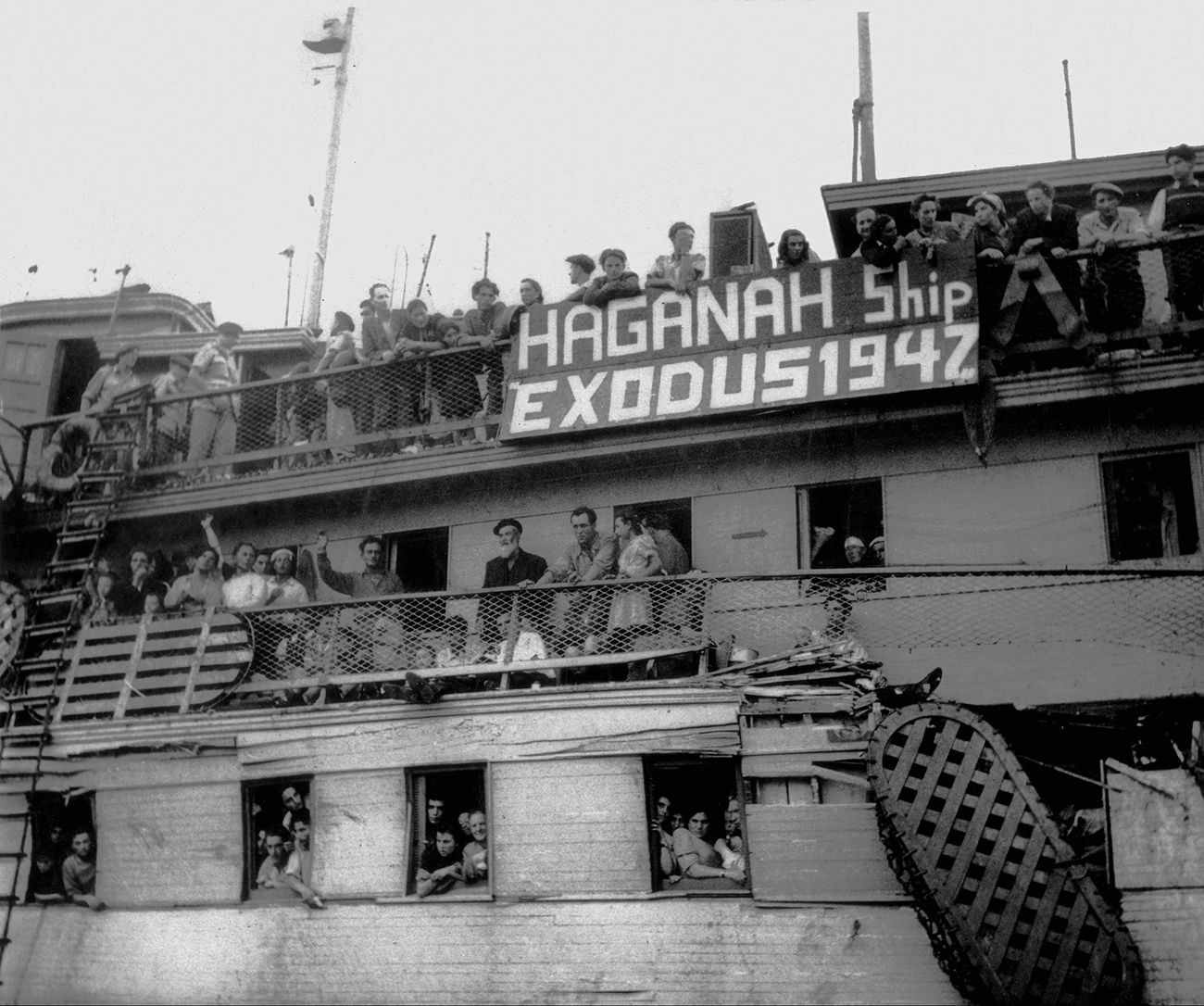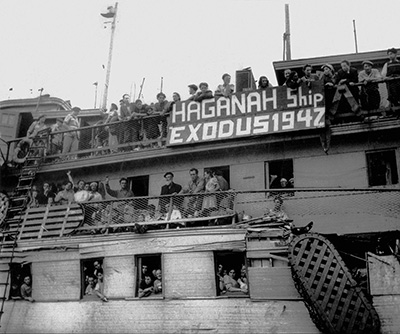
On Friday, July 18, 1947, at 2 AM, a British destroyer circled the clandestine immigration ship Exodus, carrying 4,500 Holocaust survivors, and demanded that it surrender. The crew tried to resist, but five additional destroyers surrounded the ship and prevented it from escaping. Ladders and bridges were laid from the battleships to the deck, and British soldiers boarded the Exodus, in an attempt to take it over, but resistance was fierce. The ma’apilim – clandestine immigrants – fought mightily. It was only after three hours, when the ship had sustained serious blows on all sides, and its commanders feared that it would go down with all the people on board, that an order to surrender was given. The ma’apilim were transferred to deportation ships, which transported them back to detention camps in Europe – from which they had fled in the hope of reaching the Land of Israel. The deportation was widely covered and documented, with the eyes of the world following what was taking place. The determination of the ma’apilim resonated worldwide, and eventually influenced the United Nations to recognize the State of Israel. Although the Exodus was the largest, it was only one of 140 ships that brought over 100,000 ma’apilim to the Land of Israel from the mid-1930s until the establishment of the state. The clandestine immigration campaigns, supported by Keren Hayesod, raised the morale of the Jewish people, which was in crisis after the scale of the Holocaust became apparent. The hundreds of thousands of Jewish refugees who had survived the Holocaust were housed in camps in Europe that were managed by the Jewish Agency for Israel, which cared for them and prepared them for the day when they would be able to make aliyah.
Photo: Ma’apilim on the clandestine immigration ship Exodus in the port of Haifa, before being deported back to Europe, 1947
